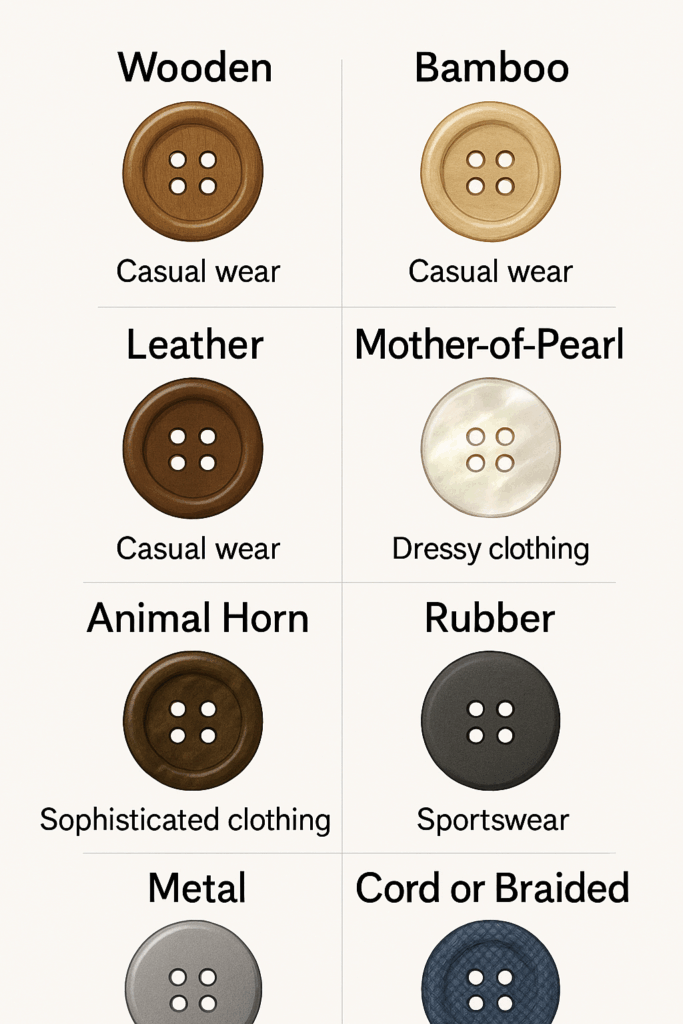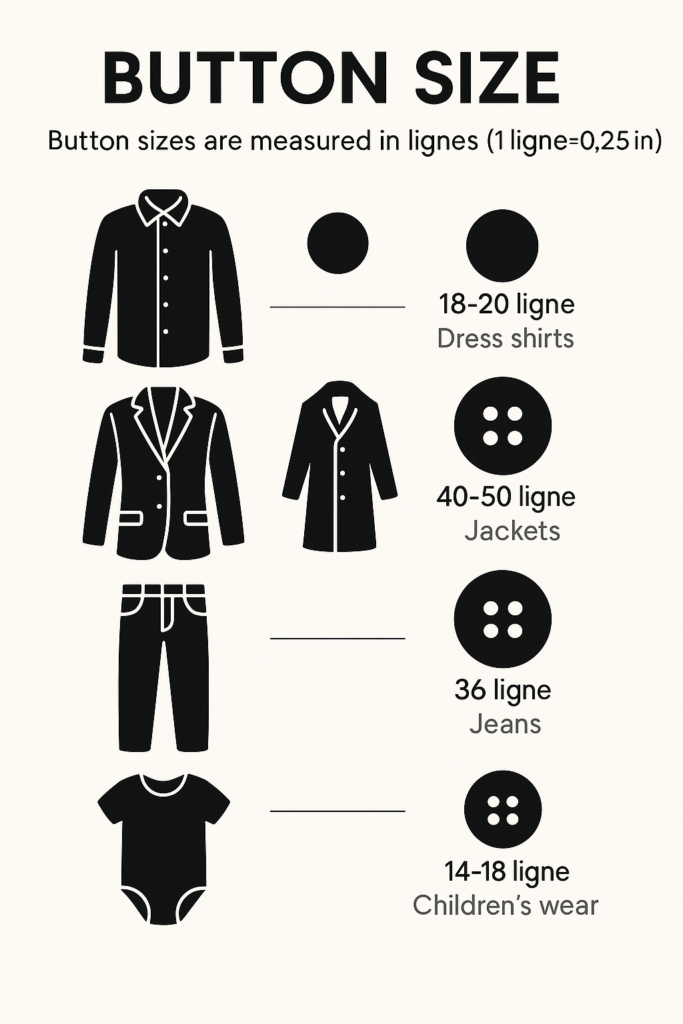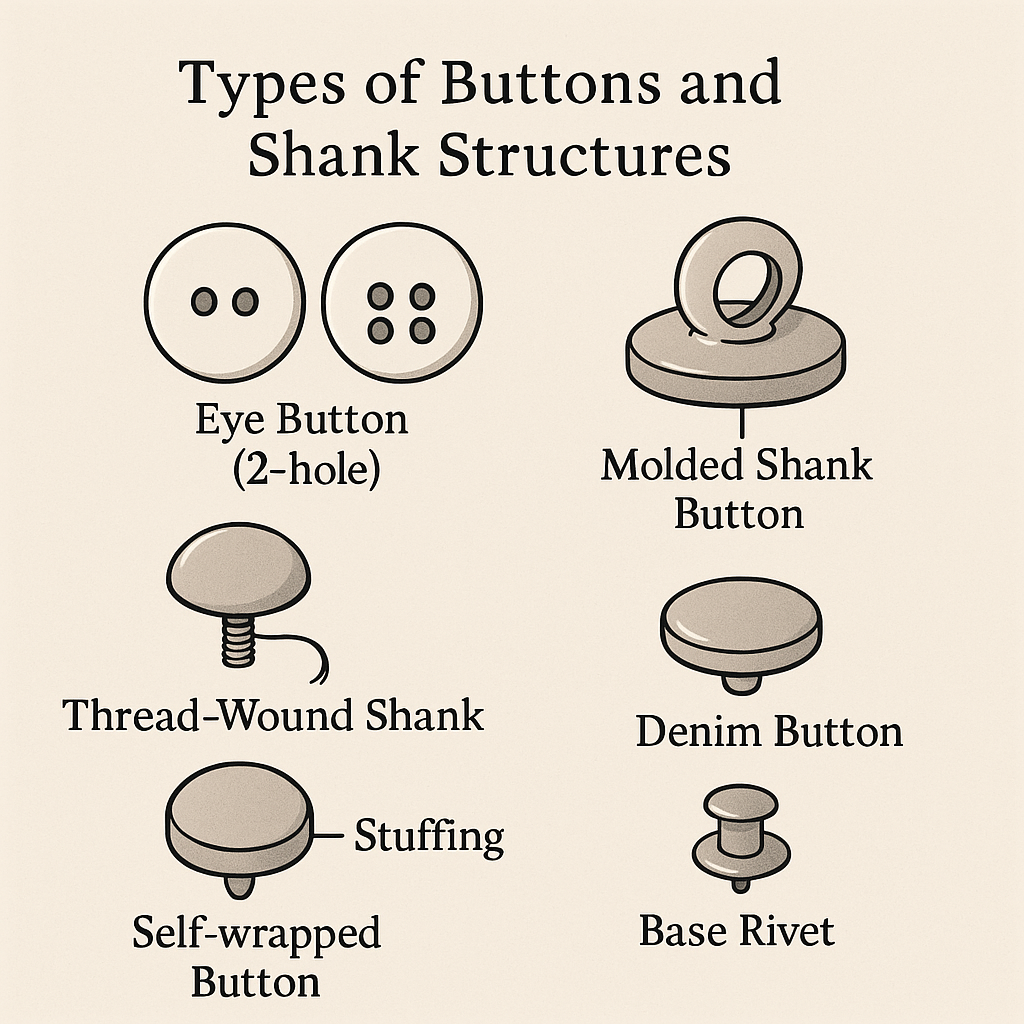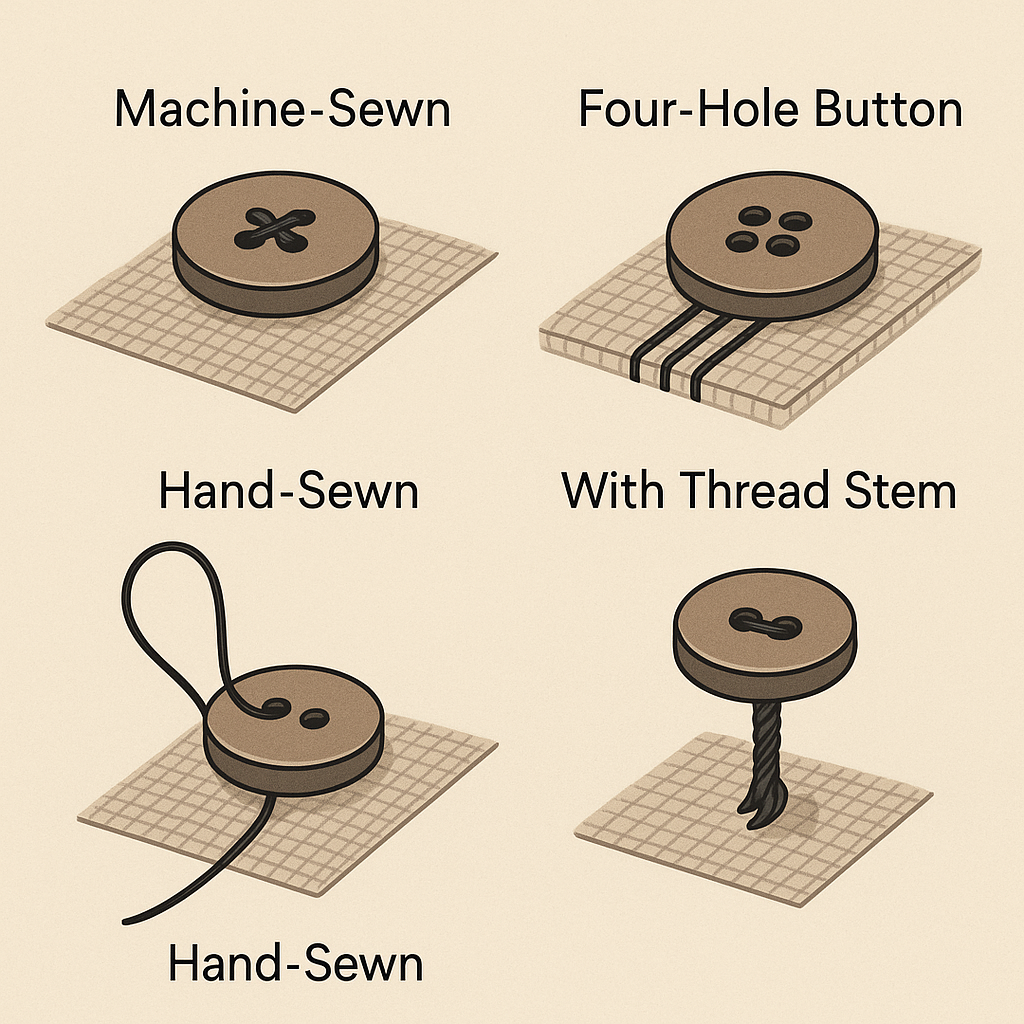🧵 A Complete Guide to Button Materials in Garment Manufacturing
Buttons may be small, but their material makes a big impact on fashion, durability, and garment care. Whether you’re producing casualwear, formal attire, or high-end fashion, understanding the types of button materials helps ensure the best match between design and functionality.
This article explores the most common button materials — from traditional bone and shell to modern plastics — to guide designers and manufacturers in choosing the right finish for every garment.
🔸 Why Button Material Matters
The material of a button determines more than appearance:
- 🧼 Washability
- 💪 Durability
- 🎨 Dyeability
- 🧵 Sewing compatibility
- 🧥 Garment style match
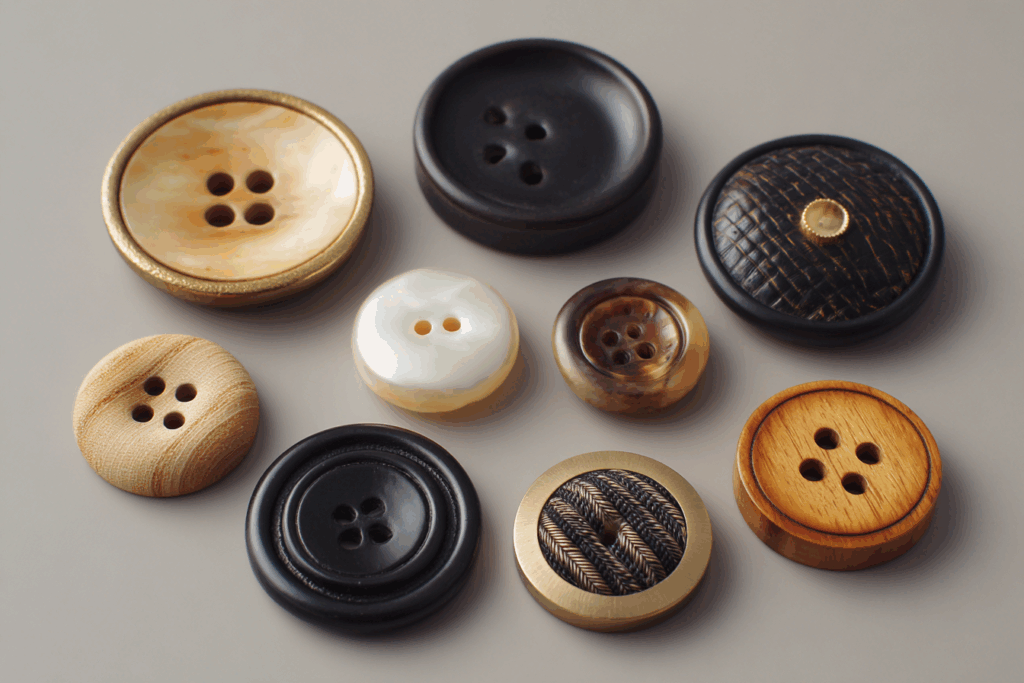
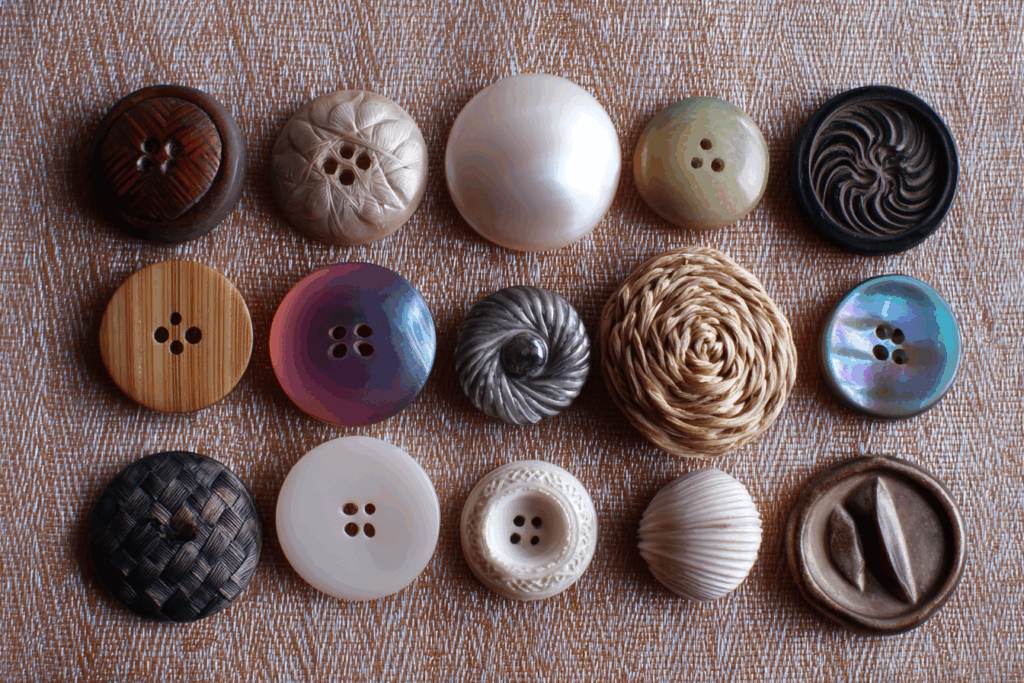
🔹 Common Button Materials & Their Characteristics
1. Plastic (Polyester or Nylon)
✅ Most common in modern garments
✔️ Easily shaped and dyed
✔️ Machine washable and dry-cleanable
⚠️ May melt at high temperatures or chip under harsh cleaning
📌 Use for: Everyday wear, shirts, blouses, children’s clothing
2. Wood
🌿 Natural and rustic look
⚠️ Not suitable for frequent washing
🚫 Avoid for machine-washed garments
📌 Use for: Casualwear, handmade garments
3. Bamboo
🌱 Sustainable and washable alternative to wood
✔️ More moisture-resistant than wood
⚠️ Still less durable than plastic or metal
📌 Use for: Eco-conscious designs, casual garments
4. Leather
🧵 Rich texture, ideal for casual or rustic designs
🚫 Cannot be machine washed or dry-cleaned
🎯 Dry cleaners must wrap in foil
📌 Use for: Coats, vests, sweaters
💡 Tip: Use faux-leather plastic buttons for a similar look with more care flexibility.
5. Animal Horn / Bone
🦴 Sophisticated and luxurious
✔️ Resistant to washing and dry cleaning
💰 Higher cost, premium touch
📌 Use for: Suits, high-end coats, traditional wear
6. Mother-of-Pearl (Shell)
🐚 Elegant and decorative
🎨 Naturally shiny — no dyeing needed
⚠️ Some shell buttons are fragile in machine washing
📌 Use for: Dressy shirts, bridal wear, feminine tops
7. Metal
🧲 Stylish, strong, and durable
✔️ Washable and dry-cleanable
⚠️ Can tarnish or discolor if left wet
⚠️ Heavyweight
📌 Use for: Denim, outerwear, uniforms
8. Rubber
🏉 Traditional for rugby shirts
✔️ Easy to wash
⚠️ Melts in dryers or high heat
📌 Use for: Sportswear, casual wear
9. Cord & Braided Buttons
🧶 Textural and decorative
📎 Often used in combination with fabric-covered buttons
📌 Use for: Traditional garments, decorative pieces, flower-themed buttons
10. Covered Buttons
🧵 Button completely wrapped in matching garment fabric
✔️ Seamless aesthetic
🧷 Often combined with metal rings for structure
📌 Use for: Couture wear, formal dresses, vintage designs
🧼 Care Considerations by Material
| Button Material | Machine Wash | Dry Clean | High Heat Tolerance | Notes |
|---|---|---|---|---|
| Plastic | ✅ | ✅ | ⚠️ (melts) | Most versatile option |
| Wood | ❌ | ❌ | ❌ | Avoid moisture |
| Bamboo | ✅ | ✅ | ⚠️ | More resistant than wood |
| Leather | ❌ | ⚠️ | ❌ | Wrap before dry cleaning |
| Horn / Bone | ✅ | ✅ | ✅ | High-end, durable |
| Mother-of-Pearl | ⚠️ | ✅ | ⚠️ | Handle with care |
| Metal | ✅ | ✅ | ⚠️ | Avoid soaking |
| Rubber | ✅ | ❌ | ❌ | No dryers |
| Cord/Braided | ⚠️ | ⚠️ | ❌ | Often decorative |
| Covered | ⚠️ | ✅ | ⚠️ | May fray over time |
✅ Final Thoughts
Choosing the right button material isn’t just a matter of style — it influences garment care, performance, and longevity.
To summarize:
- 🧥 Use plastic or metal for durability
- 👗 Choose shell or horn for elegance
- 🌱 Opt for bamboo or cord for eco or artisanal aesthetics
- ⚠️ Always match material to care expectations
